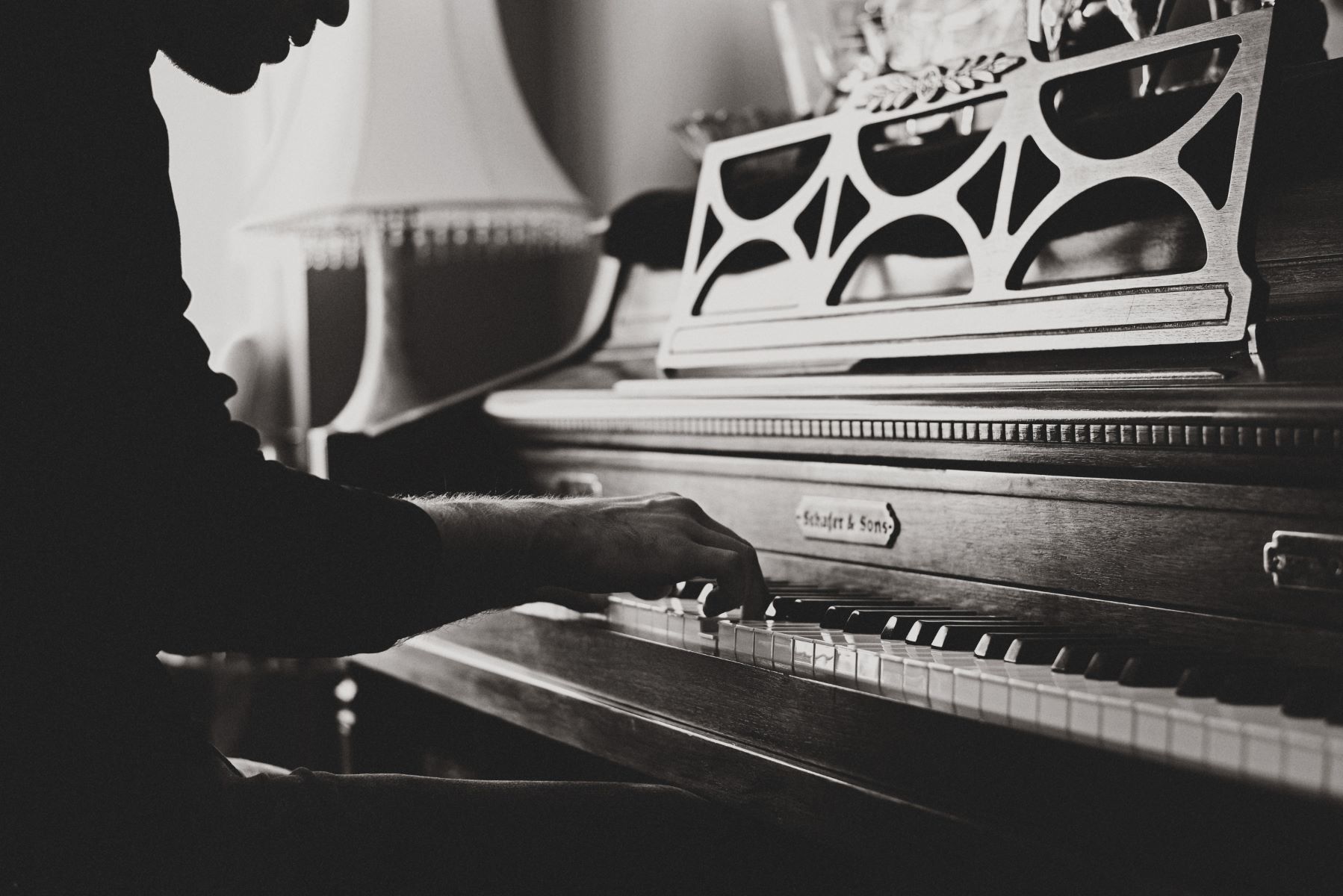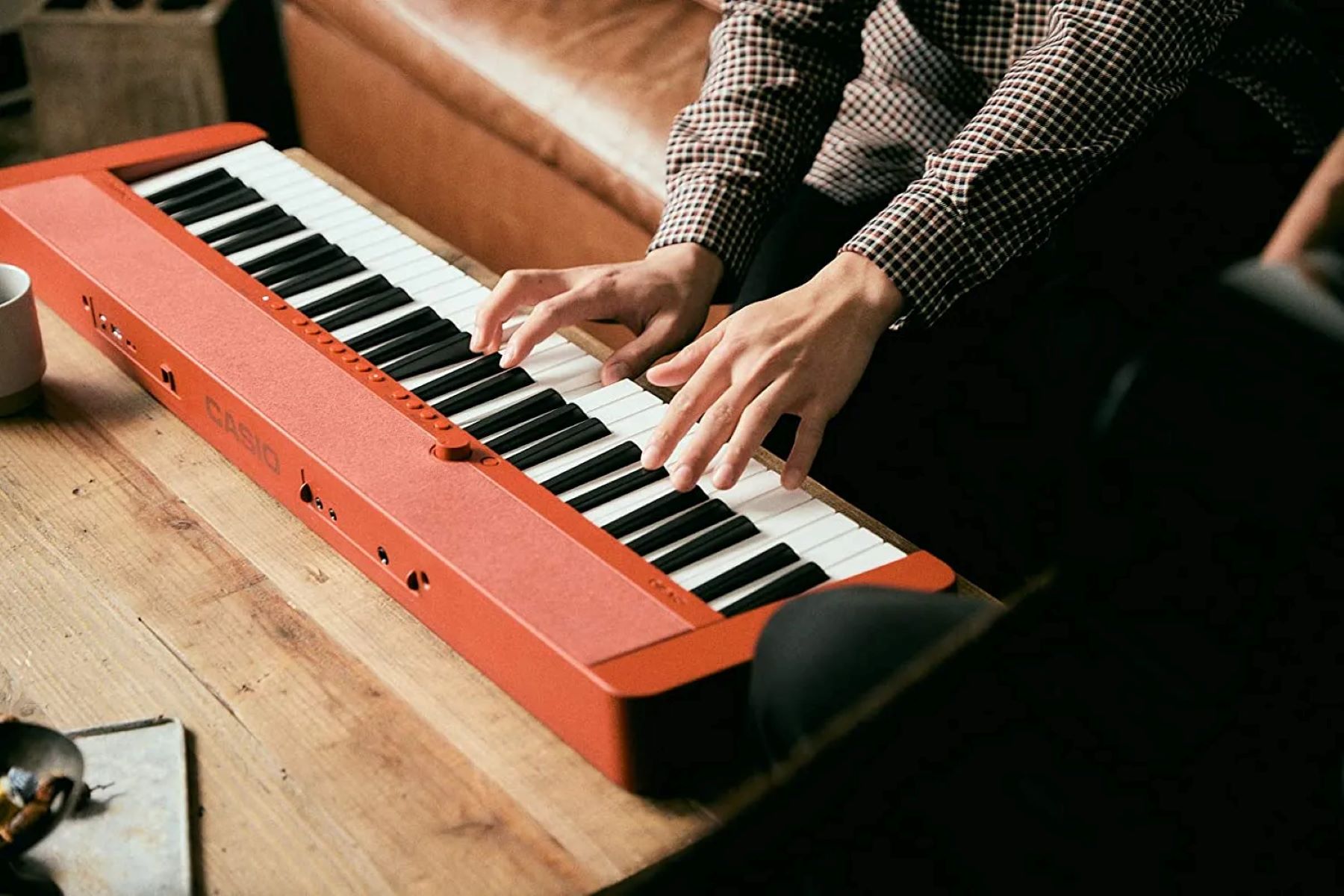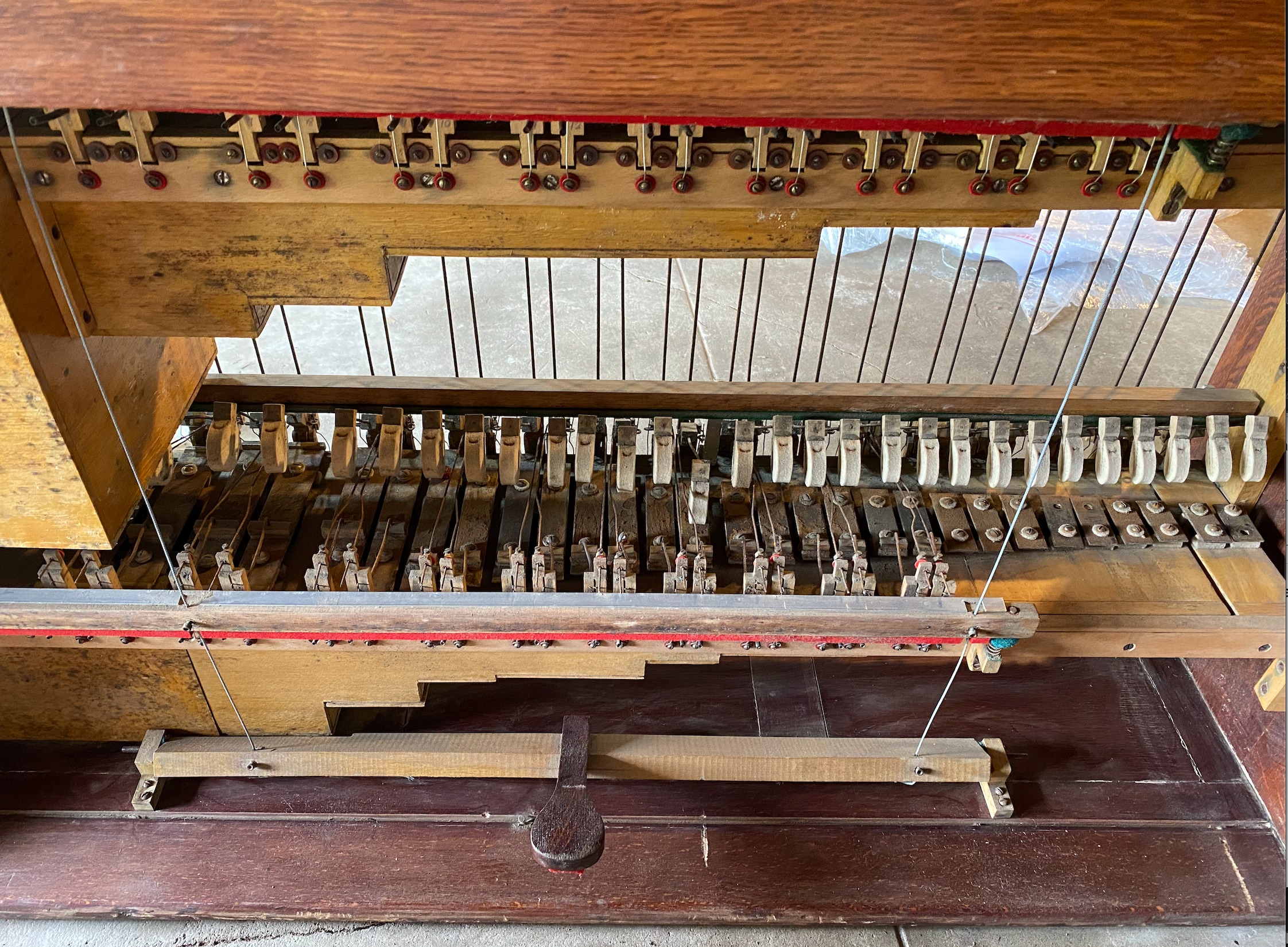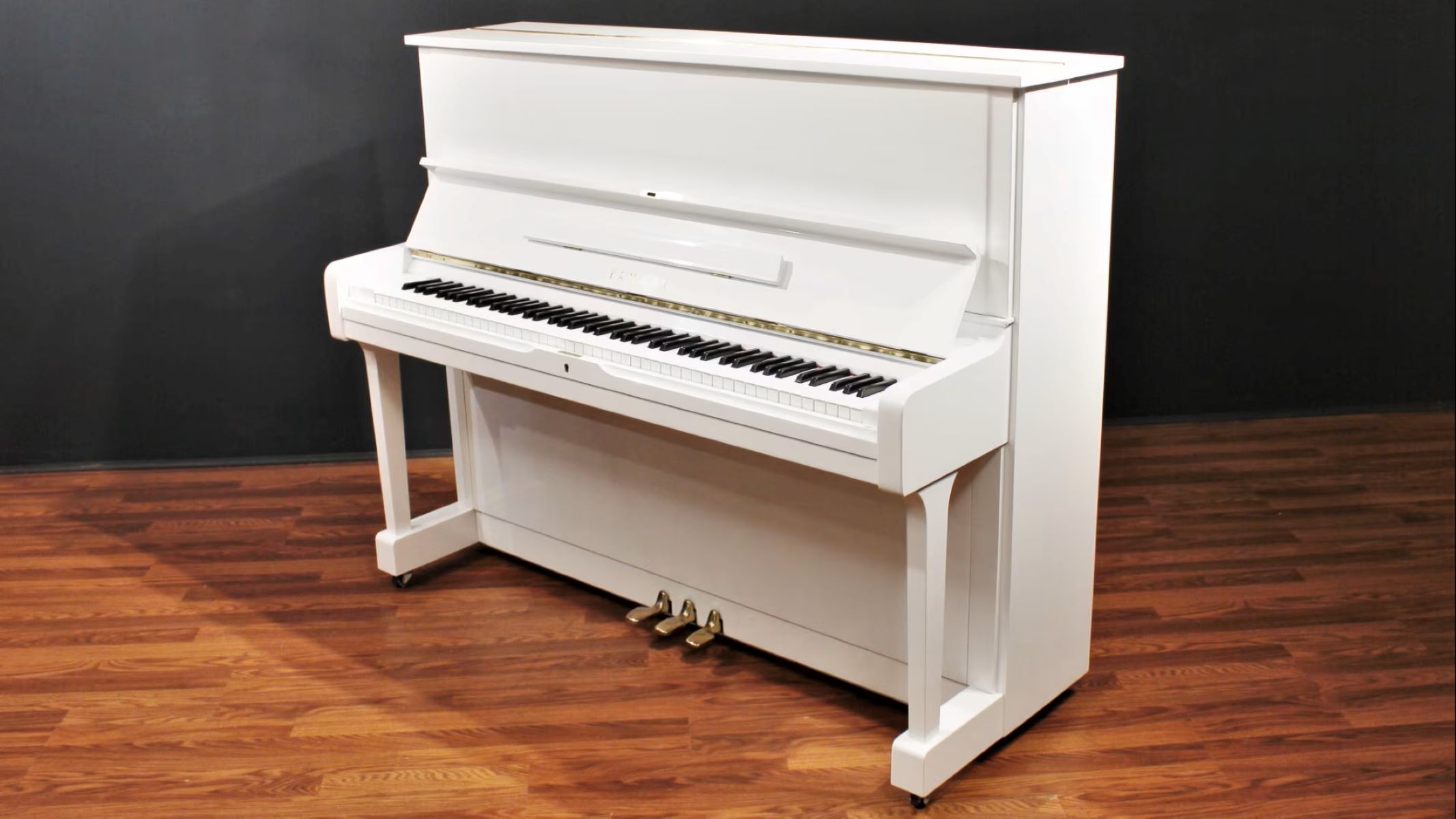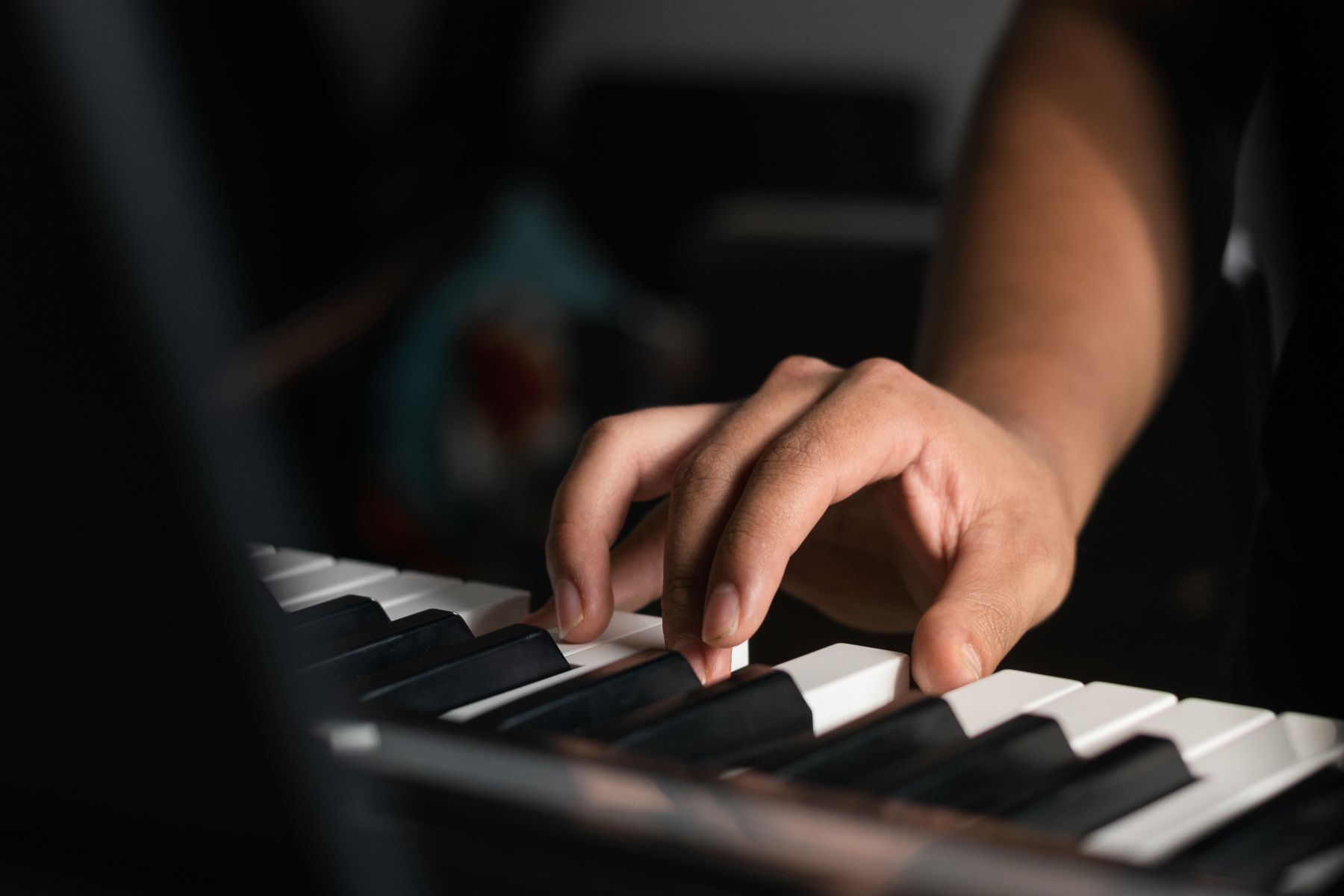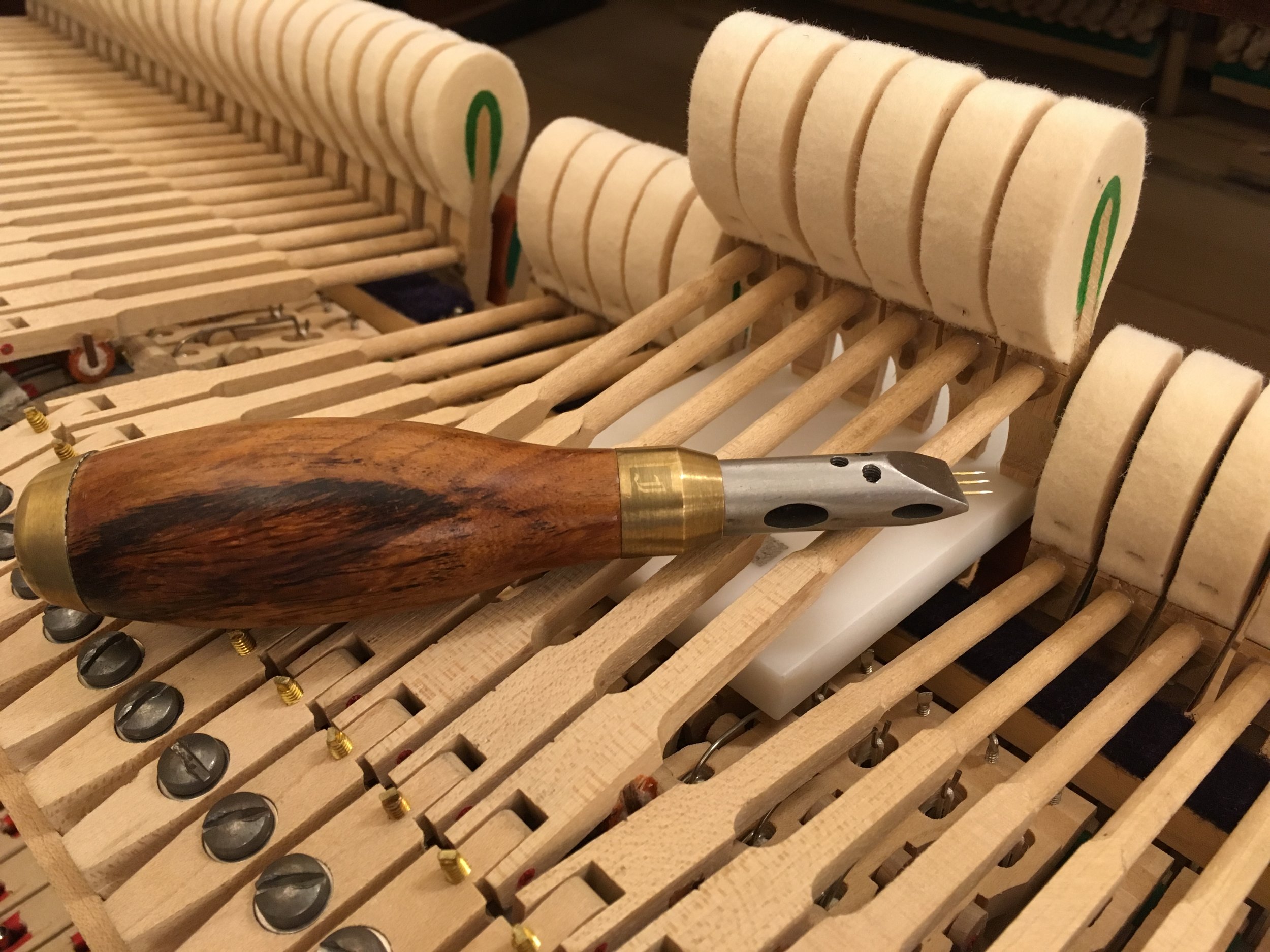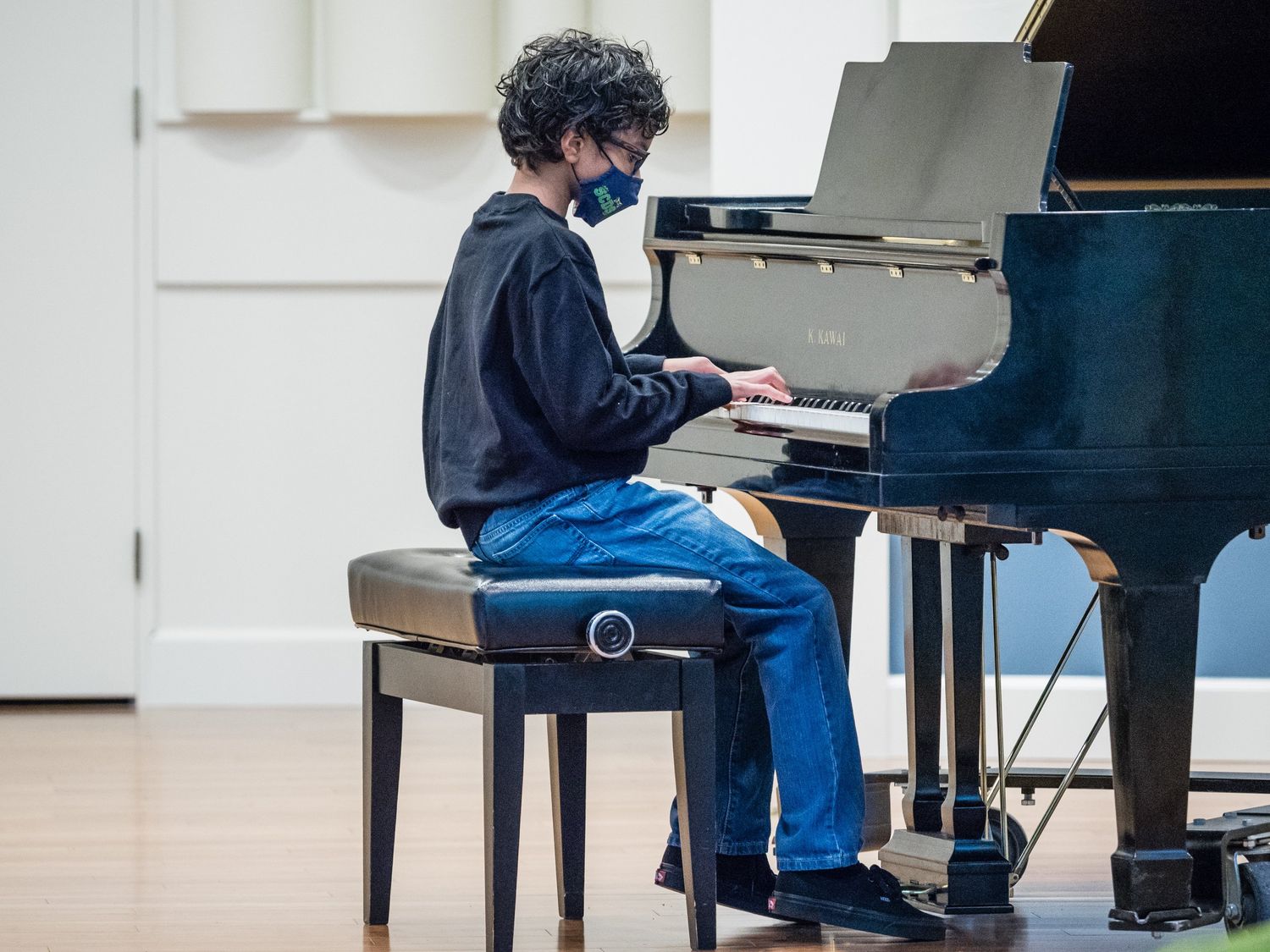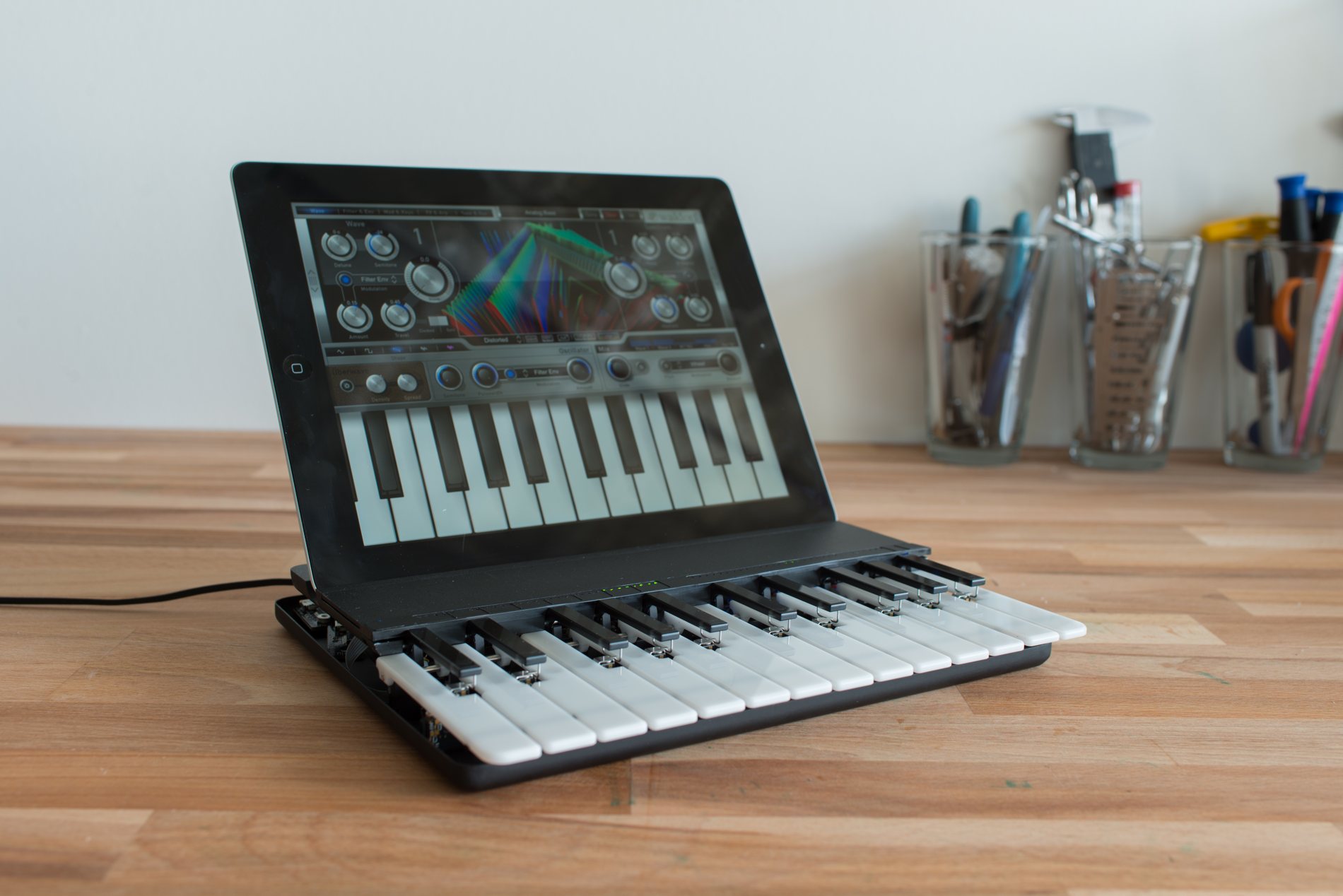Home>Instruments>Piano>What Is A Piano
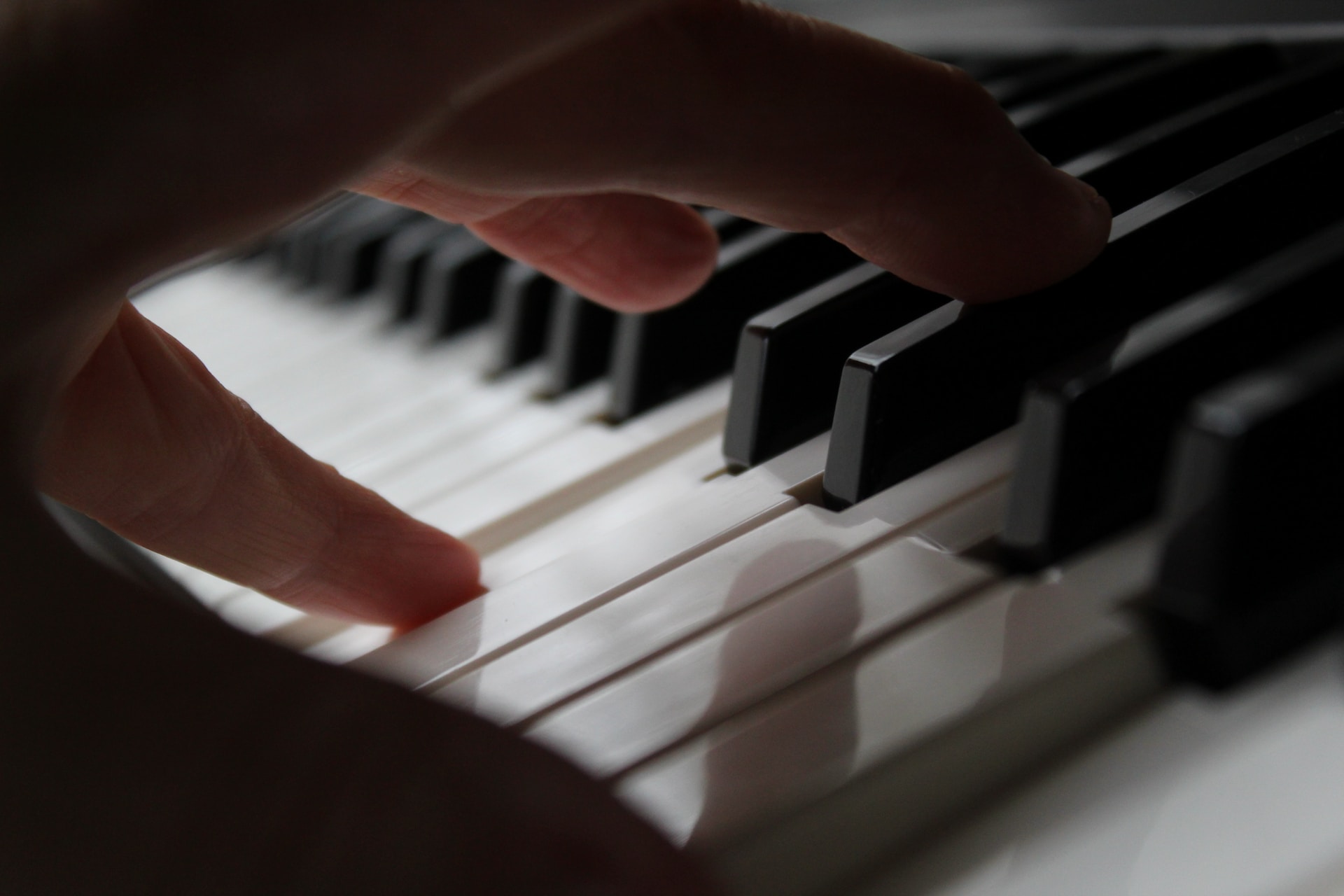

Piano
What Is A Piano
Published: February 11, 2024
Discover the history and mechanics of the piano. Learn about different types, playing techniques, and famous pianists. Explore the world of piano music and its impact on culture and art.
(Many of the links in this article redirect to a specific reviewed product. Your purchase of these products through affiliate links helps to generate commission for AudioLover.com, at no extra cost. Learn more)
Table of Contents
Introduction
The piano is a timeless and versatile musical instrument that has captured the hearts of music enthusiasts for centuries. Its melodic resonance and expressive capabilities have made it a staple in diverse genres, from classical to contemporary music. Whether it's the gentle touch of a sonata or the lively rhythm of a jazz piece, the piano has the power to evoke a wide range of emotions and captivate audiences around the world.
The piano's allure lies not only in its captivating sound but also in its rich history and intricate design. From its humble beginnings to its evolution into a sophisticated instrument, the piano has undergone a remarkable journey, leaving an indelible mark on the world of music.
In this comprehensive guide, we will delve into the captivating world of the piano, exploring its fascinating history, intricate anatomy, diverse types, inner workings, and the art of playing this majestic instrument. Additionally, we will pay homage to the influential composers who have shaped the landscape of piano music, leaving an enduring legacy for generations to come.
Join us as we embark on a harmonious journey through the captivating realm of the piano, unraveling its secrets and celebrating its profound impact on the world of music. Whether you are a seasoned pianist, an aspiring musician, or simply an admirer of beautiful melodies, this guide will illuminate the enchanting world of the piano, inviting you to explore its timeless allure and boundless creativity.
History of the Piano
The history of the piano is a captivating tale that traces back to its early predecessors, such as the harpsichord and clavichord. The journey of the piano began in the early 18th century when Bartolomeo Cristofori, an Italian instrument maker, crafted the first fortepiano, which laid the foundation for the modern piano as we know it today.
Cristofori’s innovative design revolutionized keyboard instruments by introducing a mechanism that allowed for dynamic variations in volume, giving birth to the term “pianoforte,” which translates to “soft-loud” in Italian. This groundbreaking development marked a significant departure from the harpsichord’s limited expressive capabilities, propelling the piano into the spotlight as a versatile and expressive instrument.
Throughout the centuries, the piano underwent a series of refinements and enhancements, leading to the creation of different piano styles, including the grand piano, upright piano, and electric piano. Its popularity soared during the Romantic era, with renowned composers such as Ludwig van Beethoven, Frédéric Chopin, and Franz Liszt harnessing the instrument’s expressive potential to compose timeless masterpieces that continue to resonate with audiences today.
As the piano continued to evolve, it became a centerpiece of musical performances, household entertainment, and educational institutions, cementing its status as a cultural icon cherished by musicians and music enthusiasts worldwide.
Today, the piano’s legacy endures, and its influence spans across a myriad of musical genres, from classical and jazz to pop and rock. Its timeless appeal and enduring legacy serve as a testament to the ingenuity of its creators and the profound impact it has had on the world of music.
Anatomy of a Piano
Understanding the intricate anatomy of a piano unveils the craftsmanship and engineering that contribute to its captivating sound and expressive capabilities. At first glance, a piano may appear as a simple instrument, but its internal components and structural design are a marvel of precision and artistry.
The key components of a piano include:
- Keyboard: The keyboard of a piano consists of 88 keys, encompassing both white and black keys. Each key corresponds to a specific musical note, and the variation in key length and weight contributes to the nuanced touch and responsiveness of the instrument.
- Strings: The strings of a piano are responsible for producing sound when struck by the hammers. They are meticulously crafted and tensioned to resonate at specific frequencies, creating the rich and resonant tones that define the piano’s character.
- Hammers: When a key is pressed, a mechanism activates the corresponding hammer to strike the strings, initiating the production of sound. The composition and density of the hammers directly influence the tonal quality and timbre of the notes.
- Soundboard: The soundboard amplifies the vibrations generated by the strings, projecting the sound across the instrument’s body and into the surrounding space. Its resonant properties contribute to the warmth and depth of the piano’s sound.
- Pedals: Most pianos feature three pedals, including the sustain pedal, soft pedal, and una corda pedal, each offering distinct effects on the sustain, dynamics, and tonal color of the notes being played.
- Cabinet: The cabinet of a piano encompasses the outer structure and aesthetic design of the instrument, serving as a protective enclosure for its internal components while contributing to its visual appeal.
Each element of a piano harmoniously interacts to produce the instrument’s iconic sound, offering a blend of tonal richness, dynamic range, and expressive potential that has enchanted musicians and audiences for centuries.
Types of Pianos
The world of pianos encompasses a diverse array of instrument types, each distinguished by unique characteristics and applications. Understanding the different types of pianos provides insight into the varied tonal qualities, physical dimensions, and historical significance associated with each category.
Some of the prominent types of pianos include:
- Grand Piano: Renowned for its majestic presence and unparalleled tonal depth, the grand piano is a hallmark of musical excellence. It is characterized by a horizontal frame and a distinctive lid that can be raised to enhance the projection of sound. Grand pianos are available in various sizes, ranging from the concert grand to the baby grand, offering a spectrum of tonal richness and dynamic responsiveness.
- Upright Piano: Compact yet powerful, the upright piano is a space-efficient option that is well-suited for homes, practice studios, and educational settings. Its vertical frame and upright strings enable it to deliver resonant sound despite its relatively modest footprint, making it a popular choice for aspiring pianists and seasoned musicians alike.
- Digital Piano: Embracing cutting-edge technology, digital pianos integrate electronic components to replicate the acoustic sound and tactile feel of traditional pianos. They offer versatility, portability, and advanced features such as built-in sounds, recording capabilities, and connectivity options, catering to modern musicians and performers.
- Electric Piano: With a focus on contemporary sound and performance versatility, electric pianos utilize electronic amplification and signal processing to produce a wide range of tones, including classic electric piano sounds, vibrant synthesizer textures, and dynamic effects. They are favored in pop, rock, and jazz genres for their expressive potential and stage presence.
Each type of piano exudes its own distinct charm and serves as a testament to the instrument’s enduring legacy and adaptability across diverse musical landscapes.
How a Piano Works
The intricate mechanics of a piano contribute to its remarkable ability to produce a wide range of expressive sounds, making it a marvel of engineering and craftsmanship. Understanding the inner workings of a piano unveils the seamless coordination of its components to create the iconic tones that have captivated generations of music enthusiasts.
Key elements that orchestrate the functionality of a piano include:
- Keyboard Action: When a key is pressed, it triggers a complex mechanism known as the keyboard action. This mechanism consists of levers, springs, and hammers that work in unison to transmit the player’s touch into the striking of the strings, initiating the production of sound.
- String Vibration: The strings of a piano are meticulously tensioned and precisely tuned to resonate at specific frequencies when struck by the hammers. This vibration generates the fundamental tones and harmonics that contribute to the piano’s rich and resonant sound.
- Soundboard Amplification: As the strings vibrate, the soundboard amplifies and projects the vibrations across the piano’s body, enhancing the volume and resonance of the sound. The soundboard’s resonant properties contribute to the warmth and depth of the piano’s tonal character.
- Pedal Effects: The pedals of a piano offer nuanced control over the instrument’s dynamics and sustain. The sustain pedal, for example, allows notes to resonate freely, while the soft pedal modifies the striking distance of the hammers, creating a softer tone. The una corda pedal shifts the hammers to strike fewer strings, altering the tonal color and timbre of the notes.
By harmonizing these fundamental components, a piano achieves a remarkable degree of expressiveness, enabling musicians to convey a spectrum of emotions and musical nuances through their performances. The seamless integration of mechanical precision and acoustic resonance elevates the piano to a pinnacle of musical artistry, captivating audiences with its timeless allure and boundless creative potential.
Playing the Piano
Playing the piano is a profoundly enriching and expressive experience that invites individuals to embark on a musical journey filled with creativity, discipline, and emotional resonance. Whether one is a seasoned pianist or a novice enthusiast, the act of playing the piano encompasses a harmonious blend of technical proficiency, artistic interpretation, and personal expression.
Key aspects that define the art of playing the piano include:
- Technique and Dexterity: Mastering piano technique involves honing dexterity, finger strength, and hand coordination to navigate the keyboard with precision and fluidity. Through diligent practice and exercises, pianists cultivate the agility and control necessary to execute intricate passages and dynamic variations.
- Interpretation and Expression: Beyond technical prowess, interpreting a musical composition on the piano entails infusing it with personal expression and emotional depth. Pianists harness dynamics, phrasing, and nuanced articulation to breathe life into the music, conveying a spectrum of moods and narratives through their performances.
- Musical Repertoire: The piano boasts a vast repertoire encompassing classical masterpieces, contemporary compositions, popular tunes, and improvisational styles. Exploring diverse genres and musical eras empowers pianists to broaden their artistic horizons and develop a multifaceted musical identity.
- Creative Exploration: The piano serves as a canvas for creative exploration, inviting musicians to compose original pieces, arrange existing melodies, and improvise spontaneous musical expressions. This creative freedom fosters innovation and individuality, nurturing a deep connection between the pianist and their musical voice.
Playing the piano transcends the realm of technical proficiency, evolving into a deeply personal and transformative pursuit that resonates with both the performer and the audience. It serves as a conduit for self-expression, introspection, and artistic fulfillment, offering a boundless avenue for musical discovery and emotional connection.
Famous Piano Composers
The realm of piano music is adorned with the timeless creations of influential composers whose works have left an indelible mark on the fabric of musical history. These maestros have not only shaped the evolution of piano compositions but have also expanded the boundaries of musical expression, captivating audiences with their profound artistry and innovative vision.
Some of the revered and influential piano composers include:
- Ludwig van Beethoven (1770–1827): Renowned for his groundbreaking compositions and virtuosic piano sonatas, Beethoven’s music embodies emotional depth, technical brilliance, and revolutionary fervor. His “Moonlight Sonata,” “Für Elise,” and “Piano Concerto No. 5” stand as enduring testaments to his genius.
- Fryderyk Chopin (1810–1849): A luminary of the Romantic era, Chopin’s piano works exude poetic lyricism, introspection, and exquisite melodic beauty. His evocative nocturnes, impassioned ballades, and captivating études showcase his mastery of the piano as a vehicle for emotional expression.
- Wolfgang Amadeus Mozart (1756–1791): Mozart’s prolific contributions to piano music encompass a diverse array of sonatas, concertos, and variations that exemplify his unparalleled melodic inventiveness and compositional finesse. His “Piano Sonata No. 11,” “Piano Concerto No. 21,” and “Rondo Alla Turca” continue to enrapture audiences with their timeless charm.
- Claude Debussy (1862–1918): Debussy’s impressionistic compositions revolutionized piano music with their innovative harmonies, ethereal textures, and evocative imagery. His “Clair de Lune,” “La Fille aux Cheveux de Lin,” and “Arabesque No. 1” evoke dreamlike landscapes and introspective reverie.
- Sergei Rachmaninoff (1873–1943): Rachmaninoff’s piano repertoire embodies lush romanticism, formidable technical demands, and profound emotional intensity. His “Piano Concerto No. 2,” “Prelude in C-sharp Minor,” and “Rhapsody on a Theme of Paganini” showcase his virtuosity and melodic eloquence.
These composers, among many others, have left an indelible legacy through their enduring piano compositions, enriching the musical tapestry with their distinctive voices and enduring contributions. Their works continue to inspire and captivate pianists and audiences, transcending temporal boundaries to resonate with the hearts and souls of listeners across generations.
Conclusion
The piano stands as a timeless emblem of musical artistry, captivating generations with its expressive resonance, boundless versatility, and profound impact on the world of music. Its rich history, intricate anatomy, diverse types, and enduring legacy have woven a tapestry of musical enchantment that continues to inspire and enthrall musicians and audiences alike.
From its humble origins to its evolution into a sophisticated and cherished instrument, the piano has transcended cultural boundaries and musical genres, leaving an indelible mark on the collective consciousness of humanity. Its expressive potential has served as a conduit for emotional narratives, artistic exploration, and creative innovation, fostering a deep connection between the performer, the instrument, and the listener.
As we celebrate the illustrious composers who have shaped the landscape of piano music and explore the captivating nuances of playing this majestic instrument, we are reminded of the enduring allure and transformative power of the piano. Its timeless resonance continues to echo through concert halls, intimate salons, educational institutions, and digital platforms, perpetuating a legacy of musical excellence and emotional resonance.
Whether one is drawn to the emotive melodies of a Chopin Nocturne, the virtuosic brilliance of a Rachmaninoff concerto, or the timeless elegance of a Mozart sonata, the piano remains an enduring source of inspiration, creativity, and artistic fulfillment. Its harmonious blend of technical precision and emotional depth invites individuals to embark on a harmonious journey of self-expression, introspection, and musical discovery.
As we bid adieu to this exploration of the piano’s captivating world, may its melodic resonance continue to kindle the flames of creativity, ignite the passions of aspiring musicians, and serenade the hearts of audiences for generations to come. The piano, with its enduring legacy and timeless allure, stands as a testament to the profound and transformative power of music, inviting us to embrace its enchanting embrace and embark on a harmonious symphony of artistic expression.

